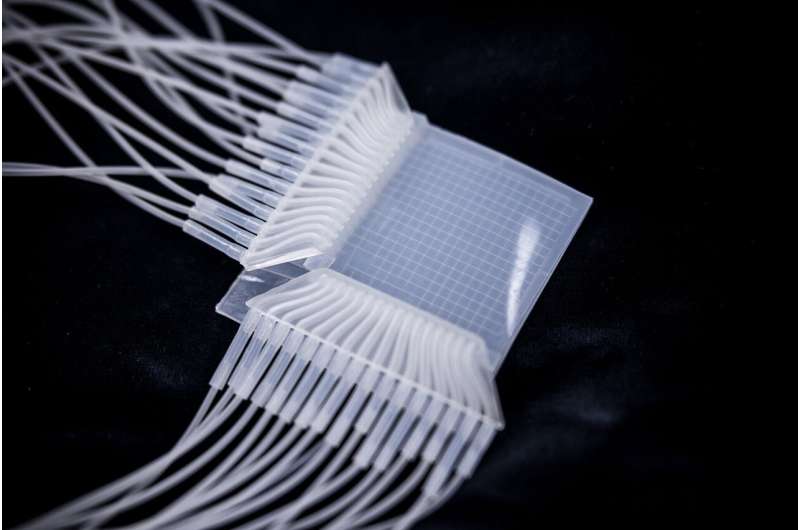
October 24, 2024 by Tampere University
Collected at: https://techxplore.com/news/2024-10-world-electric-touchpad-sensor-technology.html
Researchers at Tampere University have developed the world’s first soft touchpad that can sense the force, area and location of contact without electricity. The device utilizes pneumatic channels, enabling its use in environments such as MRI machines and other conditions that are unsuitable for electronic devices. Soft devices like soft robots and rehabilitation aids could also benefit from this new technology.
The work is published in the journal Advanced Intelligent Systems.
Made entirely of soft silicone, the device contains 32 channels that adapt to touch, each only a few hundred micrometers wide. In addition to detecting the force, area, and location of a touch, the device is precise enough to recognize handwritten letters on its surface and it can even distinguish multiple simultaneous touches.
“Electronic sensors may stop functioning in extreme conditions, such as in a strong magnetic field. Since the touchpad is not electric, a strong magnetic field does not affect it, which makes it ideal for use in devices such as MRI machines,” says Doctoral Researcher Vilma Lampinen.
The sensor technology used in the touchpad enables, for example, that if cancer tumors are found during an MRI scan, a pneumatic robot can take a biopsy while the patient is being scanned. The sensor technology guides this robot together with the data produced by the MRI images.
The pneumatic device can also be used in strong radiation or conditions where even a small spark of electricity would cause a serious hazard.
The flexibility of silicone as a material allows the integration of sensors into applications where traditional hard electronics cannot be used. These include soft robots, which are made of soft rubber-like materials and typically move using pneumatic power.
By adding data collected by sensors to such soft, non-electric devices, it will be possible to map the location, force, and area of touch across the entire surface of the device in the future. In addition to soft robots, advanced prosthetic hands would also benefit from adding a sense of touch.
“Soft robotic hands could be used to replace current prosthetic hands on, e.g., production lines. Being soft, they are safer, lighter and potentially cheaper to manufacture. Touch sensors around the hand would also enable a more delicate grip,” says Lampinen.
Wearable devices made of soft materials could also be used in rehabilitation, for example, as movement aids. Softness improves comfort compared to similar hard devices.
More information: Vilma Lampinen et al, Soft Micropneumatic Touchpad, Advanced Intelligent Systems (2024). DOI: 10.1002/aisy.202400381

Leave a Reply